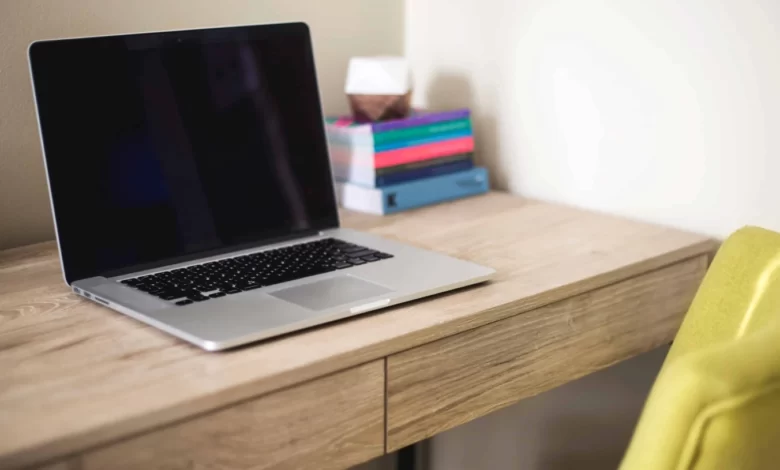Why does my laptop shut down by itself?

Experiencing sudden and repetitive laptop shutdowns can be exceptionally inconvenient. Let’s delve into the common reasons behind these unexpected shutdowns and explore potential remedies to resolve the issue.
Accumulation of Dust in the Laptop
Every laptop is equipped with a cooling mechanism, comprising a fan and a radiator. The fan circulates air over the radiator’s metal plates to dissipate heat. However, as time passes, dust can accumulate between these plates, obstructing heat dissipation. In severe cases, the dust layer can reach 5-10 mm, leading to processor and component overheating, which ultimately prompts the laptop to shut down.
It is crucial to routinely clean your laptop of dust to prevent sudden shutdowns and expensive component damage. You have the option to have your laptop professionally cleaned at a service center, where they can also diagnose potential issues. Alternatively, adept users can perform the dusting process independently.
Blocked Vents
Laptops feature ventilation openings on their underside, allowing airflow to cool the system. When these openings are obstructed, the cooling system malfunctions, leading to overheating and subsequent shutdowns. Placing your laptop on soft surfaces such as your lap, sofas, chairs, or blankets can block these vents, exacerbating overheating and shutdown issues.
To avoid this, ensure your laptop is positioned on a stable, flat surface, such as a table or desk. Even better, consider using a laptop stand with a slight incline for improved ergonomics and proper ventilation. Some laptop stands even come with integrated fans to complement the cooling system, reducing the risk of overheating.
Battery-Related Problems
In certain instances, laptops may only experience unexpected shutdowns when operating on battery power, while performing normally when connected to a power source. This may indicate issues with the battery, such as failure or the end of its life cycle. Typically, laptop batteries have a lifespan of 2-3 years, whereas laptops themselves can endure for 6-7 years, making battery-related shutdowns relatively common.
Specific symptoms signal the need for battery replacement:
- Inaccurate charge level detection
- Inconsistent battery status indicators
- Immediate shutdown upon disconnecting from the power source
Precise diagnosis of battery malfunctions necessitates the expertise of qualified professionals. While some batteries can be rejuvenated, it is often prudent to invest in a new one.
It’s worth noting that, in some cases, a new battery may not be compatible with your laptop. Although this situation can occur, it is relatively rare. Additionally, there are laptops, like my own, which is over a decade old, that operate solely on AC power, having had the battery removed due to disuse. However, these nuances are minor in the grand scheme of the laptop’s overall functionality.
Reinstalling the Operating System
Laptops boast a compact size in comparison to desktop computers. Inside their small chassis, all components are snugly arranged side by side. There is minimal space for unrestricted airflow to cool the device. Manufacturers meticulously calculate every aspect to ensure that the hardware doesn’t overheat within this confined space, where overheating is a real concern. This is why manufacturers meticulously tailor the chosen operating system for the laptop to guarantee optimal hardware operation in the constrained space where overheating might occur. This carefully selected operating system can be referred to as the “native” system for a particular laptop model, as it is the only system under which the laptop can operate without overheating.
Now, let’s imagine a scenario where a user decides to replace the laptop’s native operating system with a different one, usually a more modern and robust system. For instance, they might transition from Windows XP to Windows 7 or Windows 10.
Each operating system has its own hardware requirements for the laptop, such as RAM capacity and processor specifications. Let’s assume that the laptop performed admirably with its native Windows XP. However, after installing a “non-native” Windows 7 or Windows 10, the laptop starts experiencing random shutdowns. This occurs because the laptop was originally optimized to function seamlessly with the native system.
For this reason, it is generally discouraged to reinstall a laptop’s native operating system unless there is a specific need. Manufacturers carefully assess the laptop’s capabilities to ensure that it operates flawlessly with the original system. Any deviations from this optimized configuration may result in erratic behavior and overheating issues.
Modern Software, Games, and Applications
It is impractical to install the latest version of resource-intensive software like Photoshop on an older laptop running Windows XP. Many contemporary games also demand significant hardware capabilities.
Software programs and games come with specific requirements tailored for laptops. Before installing new software, games, or applications, it is advisable to verify these requirements and compare them against your laptop’s specifications. Installing programs, games, or applications that surpass your laptop’s capabilities can lead to system slowdowns, which in turn can cause overheating and unexpected shutdowns, often at the most inconvenient moments.
Hardware Failures
Sudden laptop shutdowns can stem from obvious or concealed hardware malfunctions. For instance, a malfunctioning motherboard, defective RAM modules, failing hard drive, or a worn-out cooling system fan can all contribute to unanticipated shutdowns.
A defective laptop connector can also be considered a hardware failure. If your laptop’s battery is completely depleted, and you rely on a 220V power supply, a faulty charging port can lead to unexpected shutdowns in the absence of a power connection. Identifying such connector-related issues is typically beyond the user’s capabilities.
Most hardware failures are challenging to detect and resolve without the requisite skills and specialized equipment. If you have ruled out other potential causes for the spontaneous laptop shutdowns, it is advisable to seek assistance from a knowledgeable systems administrator or contact a service center for a comprehensive device diagnosis.